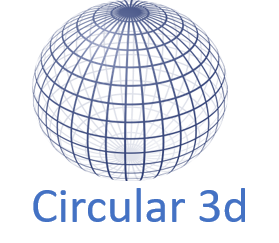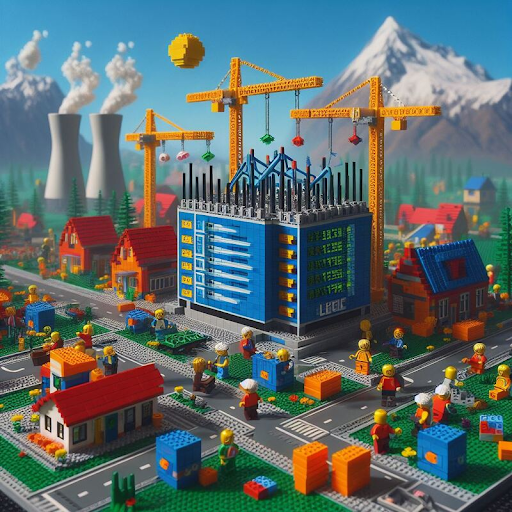In the traditional model of infrastructure, roads, power grids, and internet connectivity are passively consumed. We rely on centralized authorities to build and maintain these systems, often with limited transparency or user participation. But what if there was a way to break free from this model and become active contributors? Imagine a world where you contribute to building the infrastructure you use every day, and get rewarded for it. That’s the promise of Decentralized Physical Infrastructure Networks (DePINs), a concept that combines the physical world with blockchain technology.
DePINs represent a fundamental shift in how we think about and interact with infrastructure. No longer are we simply users; we have the potential to become owners and stakeholders. This paradigm shift opens the door for a more democratic, efficient, and sustainable approach to building and maintaining the essential systems that underpin our lives.
What are DePINs?
Think of DePINs as Legos for grown-ups, but on a much grander scale. Instead of snapping together colorful plastic bricks, DePINs utilize real-world building blocks like solar panels, WiFi hotspots, or even electric vehicle charging stations. Here’s the exciting twist: unlike traditional, centralized infrastructure projects, DePINs are open to anyone. You, your neighbor, or even a company across the globe can contribute these physical blocks and become part of a massive, decentralized network.
By working together, DePINs foster a collaborative sharing economy for infrastructure. This not only empowers individuals to participate in building essential services but also creates a more robust, distributed network that’s less susceptible to single points of failure. The potential applications of DePINs extend far beyond basic utilities. Imagine a network of DePIN-powered weather stations providing real-time data for climate research, or a fleet of self-driving cars relying on a DePIN network for communication and navigation.
How DePINs Work
DePINs unlock their true power through crypto-incentives, which drive participation and fuel the growth of the network. People who contribute infrastructure, like sharing their WiFi hotspot through a project like Helium, are rewarded with digital tokens. These tokens can be used to:
- Earn money: By providing a valuable service, you can earn a share of the network’s profits.
- Have a say: Token holders often have voting rights on how the network is run, with voting power typically proportional to their token holdings, creating a more democratic system.
- Access benefits: Tokens can unlock exclusive features within the network, like priority access to charging stations for electric vehicles.
Benefits for Users
DePINs offer a win-win situation for users. Here are just a few reasons why they’re revolutionizing the way we live:
- Increased Resilience: With DePINs, the network is more resistant to failures and outages. If one node goes down, the others can continue to function, ensuring minimal disruption to users.
- Enhanced Security: Decentralized networks are inherently more secure, as there’s no single point of attack. Hackers can’t target a single node, making it much harder to compromise the network.
- Improved Efficiency: DePINs optimize resource allocation, reducing waste and increasing efficiency. With decentralized control, users can optimize their own usage, reducing energy consumption and environmental impact.
- Increased User Control: DePINs empower users to participate in the network, giving them control over their own data and usage. This fosters a sense of community and cooperation, as users work together to maintain and improve the network.
- Scalability: DePINs can scale horizontally, allowing them to grow and adapt to changing demands without sacrificing performance or security.
Peaq: Powering the DePIN Economy
As the Web3 network powering the Economy of Things, peaq has just recently secured $20 million from its token launch. This influx of capital will be used to grow its ecosystem, further develop its Modular DePIN Functions, and ensure network security. Peaq’s mission is to provide the optimal layer 1 blockchain for DePIN projects to operate on, fostering a robust and secure foundation for this revolutionary infrastructure model.
The DePIN Flywheel
Traditional infrastructure projects often require massive investments and take ages to complete. DePINs flip this model on its head.
The DePIN Flywheel is simple: people on the supply side earn tokens by providing new or existing hardware to those seeking goods or services that hardware provides. With no middlemen, the goods and services are often cheaper and faster. This decentralized approach empowers individuals to take control of their own infrastructure, reducing reliance on traditional business models and their associated costs.
Think of it like a snowball rolling downhill. The more people participate, the bigger and more powerful the DePIN network becomes. It’s a win-win for everyone: you contribute what you can and benefit from a growing network of infrastructure built by the community, for the community.
DePINs in Practice
DePINs are already transforming various industries and aspects of our lives:
- Energy: Decentralized energy networks enable households to generate and share their own renewable energy, reducing reliance on centralized grids. Imagine a neighborhood, where homes with solar panels can contribute excess energy to the network, while others can purchase this clean energy at a competitive rate. This can lead to a more sustainable energy grid and potentially lower energy costs for everyone.
- Transportation: DePINs are being developed for autonomous vehicles, allowing them to communicate and coordinate with each other in real-time. Projects like Holochain are working on DePIN solutions that could revolutionize traffic management, leading to safer and more efficient transportation systems.
- Healthcare: Brainstem is creating a decentralized physical infrastructure network that gathers privacy-first health data. This DePIN leverages the power of individuals’ wearables to build a robust and distributed network for capturing valuable health information. Individuals can control and monetize their data, accelerating scientific research and enabling personalized healthcare.
- Communication: DePINs are being explored for decentralized internet protocols, enabling secure, peer-to-peer communication and data transfer. This could lead to a more robust and censorship-resistant internet, similar to the goals of projects like the Filecoin network.
These are just some examples, and the possibilities with DePINs are vast. As the technology continues to develop, we can expect to see even more innovative applications emerge across various industries.
Challenges and Overcoming Obstacles
While DePINs hold immense potential, there are challenges that need to be addressed for widespread adoption. Here are some key hurdles and how we can overcome them:
- Regulation: DePINs operate in a grey area when it comes to existing regulations. Clear and adaptable regulatory frameworks are needed to ensure consumer protection and responsible network operation. Industry stakeholders, policymakers, and developers need to work together to create a regulatory environment that fosters innovation while mitigating risks.
- Scalability: Scaling DePIN networks to accommodate a large number of users and devices requires innovative solutions. Techniques like sharding and off-chain transactions can help distribute the workload and maintain network efficiency as it grows.
- Security: While decentralized networks offer inherent security advantages, they are not immune to cyberattacks. Robust security protocols and ongoing vulnerability assessments are crucial to safeguard DePIN networks and user data.
- User Adoption: Encouraging widespread user participation is essential for DePINs to reach their full potential. User-friendly interfaces, educational resources, and clear incentives can help drive adoption and build a strong community around DePIN projects.
Overcoming these challenges requires collaboration between developers, policymakers, and the public. By working together, we can unlock the full potential of DePINs and usher in a new era of collaborative infrastructure development.
Conclusion: Reimagining Infrastructure with DePINs
DePINs represent a paradigm shift in how we interact with the infrastructure that underpins our daily lives. By leveraging the power of blockchain technology, DePINs empower individuals to become active contributors and stakeholders in a collaborative sharing economy. This shift promises a more democratic, efficient, and sustainable approach to building and maintaining essential infrastructure.
The potential benefits of DePINs are immense. From increased network resilience and enhanced security to improved efficiency and user control, DePINs have the potential to revolutionize the way we access and manage critical infrastructure. As DePIN projects continue to develop and mature, we can expect to see even more innovative applications emerge, shaping a future where infrastructure is no longer a passive system, but a vibrant and dynamic network built and maintained by the very people who rely on it.
However, DePINs are still a developing technology, and there are challenges to overcome. Regulatory frameworks need to adapt to this new paradigm, and ensuring equitable access and participation will be crucial for widespread adoption. Despite this, the potential of DePINs is undeniable. As we move forward, it’s important to embrace the opportunities that DePINs offer and work together to create a more robust, sustainable, usable infrastructure for the future.




